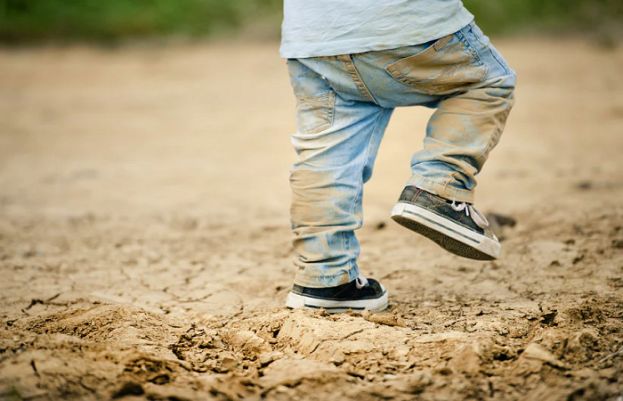[ad_1]

Fortunately, we can help you eliminate this dirty work, regardless of the muddy material! Follow these tips to make a clean getaway.
Below are the most common types of materials that can become mud-stained, with steps on how to remove dirt and mud from each:
Non-washable fibers such as acetate, burlap, fiberglass, rayon, rope, silk, triacetate, wool
Washable fibers such as acrylic fabric, cotton, linen, modacrylic, nylon, olefin, polyester, spandex
Hard surfaces such as acrylic plastic, alabaster, aluminum, asphalt, bamboo, brass, bronze, cane, ceramic glass/tile, chromium, copper, cork, enamel, glass, grout, iron, linoleum, marble, paint (flat or gloss), plexiglas, polyurethane, porcelain dishes, porcelain fixtures, stainless steel, tin, vinyl clothing, vinyl tile, vinyl wall covering, zinc
Stone surfaces such as bluestone, brick, concrete, flagstone, granite, limestone, masonry tile, sandstone, slate, terrazzo
Carpet (synthetic or wool)
Special fabrics such as felt, fur (natural or synthetic), leather, suede
Silver
Wallpaper
Wood
Getting Mud and Dirt Stains Out of Non-Washable Fibers
Learn how to remove dirt and mud stains from acetate, burlap, fiberglass, rayon, rope, silk, triacetate, wool:
Let mud dry, then brush (the method of using a stiff-bristled brush or toothbrush to sweep staining material up onto a piece of paper) off the excess.
This should remove the mud stain, but if any remains, sponge (the method of using a dampened pad to apply light strokes, moving outward from the center of the stain) the area with warm water and apply a few drops wet spotter and a few drops white vinegar.
Cover with an absorbent pad dampened with wet spotter. Let stand as long as any stain is being removed.
Change the pad as it picks up the stain.
Keep stain and pad moist with wet spotter and vinegar.
Flush (the method of applying stain remover to loosen staining material and residue from stain removers) with water and repeat wet spotter/flushing until no more stain is removed.
If stain remains, apply rubbing alcohol to the area and cover with an absorbent pad dampened with alcohol. (Do not use alcohol on acetate, rayon, or triacetate.)
Let the pad stand as long as any stain is being removed.
Change the pad as it picks up the stain.
Keep the stain and pad moist with alcohol.
If stain persists, moisten the area with an enzyme presoak (follow directions on label, as some enzyme presoaks are not designed for use on silk or wool.)
Cover with a clean pad that has been dipped in the solution and wrung almost dry. Let it stand for 30 minutes.
Add enough solution to keep the area warm and just moist.
When no more stain is being lifted, flush thoroughly with water and allow to dry.
Removing Mud Stains From Washable Fibers
Follow these steps to remove dirt and mud stains from acrylic fabric, cotton, linen, modacrylic, nylon, olefin, polyester, spandex:
Brush off excess dried mud. Laundering should remove any remaining stain.
If more treatment is needed, sponge the stain with rubbing alcohol. (Do not use alcohol on acrylic or modacrylic.)
Flush with water. If stain persists, sponge it with a dry-cleaning solvent such as K2r Spot Lifter or Afta Cleaning Fluid.
Allow to dry, then launder.
Getting Stubborn Mud Stains Off Hard Surfaces
Follow these steps to remove dirt and mud stains from acrylic plastic, alabaster, aluminum, asphalt, bamboo, brass, bronze, cane, ceramic glass/tile, chromium, copper, cork, enamel, glass, grout, iron, linoleum, marble, paint (flat or gloss), plexiglas, polyurethane, porcelain dishes, porcelain fixtures, stainless steel, tin, vinyl clothing, vinyl tile, vinyl wall covering, zinc:
Scrape (the method of using a dull tool to gently lift off excess solid or caked-on stains) any excess with a dull knife or spatula.
Wipe the surface with a cloth or sponge dipped in warm sudsy water.
Rinse well and wipe dry.
Getting Mud Off Stone Surfaces
Follow these steps to remove dirt and mud stains from bluestone, brick, concrete, flagstone, granite, limestone, masonry tile, sandstone, slate, terrazzo:
Carefully remove excess.
Wash the mud stain with a solution of washing soda (not soap) and water. Use a cloth or soft-bristled brush to help clean.
Rinse thoroughly with clear water and allow to air dry.
Removing Mud From Carpet
Follow these steps to remove dirt and mud stains from carpet:
To avoid forcing the mud deeper into the fibers; allow mud to dry before treating it.
Gently brush loose soil, then vacuum as usual. If a stain remains, spray with a carpet shampoo.
When the shampoo has dried, vacuum.
Cleaning Special Fabrics
Follow these steps to remove dirt and mud stains from felt, fur (natural or synthetic), leather, or suede:
Allow mud to dry, then gently brush off.
Mix a solution of mild soap in lukewarm water. Swish to create a great volume of suds.
Apply only the foam with a sponge.
Wipe area with clean dry cloth.
Cleaning Silver
Follow these steps to remove dirt and mud stains from silver:
Wash as soon as possible in hot sudsy water.
Rinse in hot water and dry immediately with a soft cloth to prevent tarnish.
Cleaning Wallpaper
Follow these steps to remove dirt and mud stains from wallpaper:
Brush off any excess dirt.
With a cloth or sponge dampened with cool water, wipe the stained area.
Overlap strokes to avoid streaking. Gently pat dry.
Cleaning Wood
Follow these steps to remove dirt and mud stains from wood:
Remove any excess dirt with a brush.
Mix dish soap or liquid laundry detergent in hot water and swish to make a great volume of suds.
Dip a cloth in only the foam and apply to the stain.
Rinse with a clean cloth dampened with clear water.
Polish or wax as soon as possible.
[ad_2]
Source link

